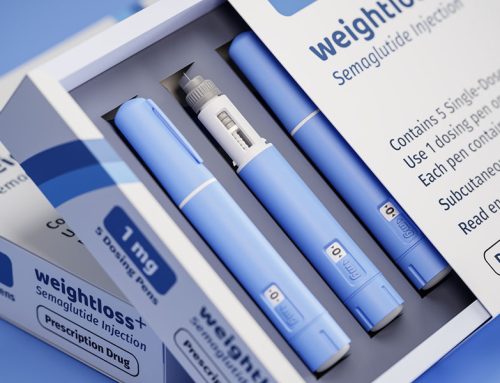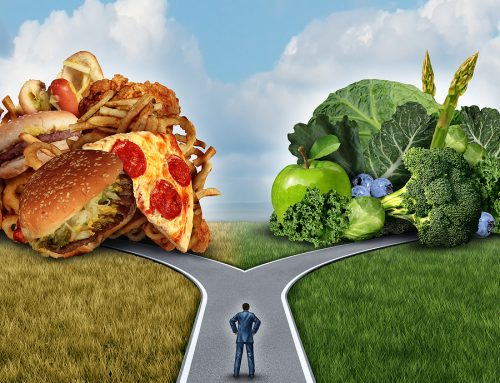Almost everybody has heard that there’s 3500 calories in a pound of fat, so if you create a negative energy balance of 3500 calories in a week, you lose a pound of weight. Create a negative energy balance of 7000 calories (deficit) in a week and you tip the scale to a two pound weight loss and so on, right? Not so fast…

Some of the equations in his paper gave me a headache… but despite the complex formulas he used to come to his conclusions, the article contained a lot of simple and very practical tips you can use to properly balance your caloric intake with output, fine tune your calorie deficit and help you retain more muscle when you diet.
Below, I’ve distilled some of the information into a simple bullet-point summary that any non-scientist can understand, and then I wrap up with my interpretation of how you can apply this:
Calories required to lose a pound and fine-tuning your caloric deficit
-
- 3500 calories to lose a pound has always been the rule of thumb. However, this 3500 calories figure goes back to research which assumed that all the weight lost would be adipose tissue (which would be ideal, of course).
-
- But as we all know (unfortunately), lean body mass is lost along with body fat, which would indicate that the 3500 calorie figure could be an oversimplification.
-
- The amount of lean body mass lost is based on initial body fat level and size of the calorie deficit
-
- Lean people tend to lose more lean body mass and retain more fat.
-
- Fat people tend to lose more body fat and retain more lean tissue (revealing why obese people can tolerate extremely low calorie diets better than already lean people).
-
- Very aggressive low calorie diets tend to erode lean body mass to a greater degree than more conservative diets.
-
- Whether the weight loss is lean or fat gives you the real answer of what is the required energy deficit per unit of weight loss.
-
- The metabolizable energy in fat is different than the metabolizable energy in muscle tissue. A pound of muscle is not 3500 calories.A pound of muscle yields about 600 calories.
-
- If you lose lean body mass then you lose more weight than if you lose fat.
-
- If you create a 3500 calorie deficit in one week and you lose 100% body fat, you will lose one pound.
-
- But if you create a 3500 calorie weekly deficit and as a result of that deficit, lose 100% muscle, you would lose almost 6 pounds of body weight! (Of course, if you manage to lose 100% muscle, you will be forced to wear the Dieter’s Dunce cap).
-
- If you have a high initial body fat percentage, then you are going to lose more fat relative to lean, so you will need a larger deficit to lose the same amount of weight as compared to a lean person!
-
- Creating a calorie deficit once at the beginning of a diet and maintaining that same caloric intake for the duration of the diet and after major weight loss fails to account for how your body decreases energy expenditure with reduced body weight. (Most people have to reduce calories as a diet progresses to continue losing fat at the same rate).
-
- Weight loss typically slows down over time for a prescribed constant diet (the “plateau”). This is either due to the decreased metabolism mentioned above, or a relaxing of the diet compliance, or both. (Most people just can’t hack aggressive calorie reductions for long).
-
- Progressive resistance training and or high protein diets can modify the proportion of weight lost from body fat vs lean tissue (which is why weight training and sufficient protein while on calorie restricted diets are absolute musts!)
So, based on this info, should you throw out the old calorie formulas? Is 3500 calories to lose a pound wrong?
Well, not necessarily. You can still use the standard calorie formulas to figure out how much you should eat. You can still use a 500-1000 calorie per day deficit (below maintenance) as a generic guideline to figure where to set your calories to lose one or two pounds per week respectively (at least on paper anyway).
Even better however, you could use this info to fine tune your caloric deficit using a percentage method. You can also use your starting body fat level to help guide you for choosing your deficit. This is a much more personalized and effective approach.
Calorie Deficit Levels:
15-20% below maintenance calories = conservative deficit
20-25% below maintenance calories = moderate deficit
25-30% below maintenance calories = aggressive deficit
31-40% below maintenance calories = very aggressive deficit (risky)
50%+ below maintenance calories = semi starvation/starvation (very risky / potentially unhealthy)
(Note: According to exercise physiologists Katch & Mcardle, the average female between the ages of 23 and 50 has a maintenance level of about 2000-2100 calories per day and the average male about 2700-2900 calories per day)
Usually, we would suggest starting with a conservative deficit of around 15-20% below maintenance. What this research is saying, is that there can be big differences between lean and overweight people in how many calories they can or should cut.
If you have very high body fat to begin with, the typical rule of thumb on calorie deficits may underestimate the deficit required to lose a pound. It may also be too conservative and you can also probably use a more aggressive deficit safely without as much worry about muscle loss, metabolic slowdown, etc.
If you are extremely lean, like a bodybuilder trying to get even leaner for competition, you would want to be very cautious using aggressive calorie deficits. You’d be better off keeping the deficit conservative and starting your diet/cutting phase earlier to allow for a slow, but safe rate of fat loss, with maximum retention of muscle tissue.
The long and short of it is that its not quite so simple as 3,500 calories being the deficit to lose a pound. Like lots of other things in nutrition that vary from person to person, the ideal amount of calories to cut “depends”…
Sincerely,
Your friend and coach
Founder, Burn the Fat Inner Circle
Author, Burn the Fat, Feed the Muscle
PS. If you would like to learn the best way to calculate your calories, the newest way to set your macros and then see how to turn calories and macros into 100% customized meal plan, then be sure to check out the NEW book, The Guide To Flexible Meal Planning For Fat Loss.
PPS. Related: Calorie deficits made ultra simple
Tom Venuto is a natural bodybuilder, fat loss coach, fitness writer and author of Burn The Fat, Feed The Muscle. Tom’s articles are published on hundreds of websites worldwide and he has been featured in Muscle and Fitness, Men’s Fitness, Oprah magazine, The New York Daily News, The New York Times and the Wall Street Journal. He has appeared on dozens of podcasts and radio shows including Sirius XM, ESPN-1250, WCBS and Day Break USA. Tom is also the founder and CEO of the premier fat loss support community, the Burn The Fat Inner Circle.
References:
Thomas, DM et al. Can a weight loss of one pound a week be achieved with a 3500-kcal deficit? Commentary on a commonly accepted rule. International Journal of Obesity. 37: 1611-1613. 2013.
Heymsfield S. et al.Energy content of weight loss: kinetic features during voluntary caloric restriction metabolism clinical and experimental. 7: 937-943. 2012.
Forbes GB. Body fat content influences the body composition response to nutrition and exercise. Ann NY Acad Sci. 904: 359-365. 2000
Hall, KD., What is the required energy deficit per unit of weight loss? Int J Obesity. 32(3): 573-576. 2008
McArdle WD. Exercise physiology: Energy, Nutrition, and Human performance. 4td ed. Williams & Wilkins. 1996.
Wishnofsky M. Caloric equivalents of gained or lost weight. Am J Clin Nutr. 6: 542-546.







Excellent, esp. the 600 cal/lb muscle vs. the 3500 cal/lb fat.Read it sort of quickly.Unless I missed it, in a total caloric deficit, I would suggest adding what percent should be diet and what percent exercise.I personally do not think dietary caloric restriction over 10% is wise.Probably 5% diet, then 10% exercise, for 15% total.Depending, as you point out, on a variety of factors.Perhaps the greatest factor depending on whether someone is actively *gaining* weight at the time of the assessment.PV
“activity and exercise” are already factored into the maintenence level calories (TDEE) when you use a formula such as the popular katch mcardle or harris benedict equation for calculating calories. So, you simply need to figure an appropriate reduction/deficit in food intake once you have that maintenance/ TDEE figure. That “appropriate” deficit is what we were revisiting in this postActually a 10% caloric deficit below maintenance would be extremely conservative and might result in frustratingly slow weight loss for someone who is very overweight. Slow and steady is good, but long term compliance could just as easily fall by the wayside if progress is too slow to sustain motivation, as it could if the diet is too restrictive to stay on. We want to find that perfect balance point between the two.I generally suggest a conservtive, but significant deficit of 15-20% for starters. Should you want to increse the deficit, you can increase activity above and beyond your current exercise level, in order to accelerate fat loss more. (If youre maxed out on cardio or dont have more time, then you can simply increase the food deficit, up to the safe limits.)For example, if you decrease good intake by 15% and increase activity, then you get a total deficit (food reduction + activity increase) of 25%. Basically, we were just looking at the food reduction aspect here.But what this recent data from Dr. Hall is suggesting is that not only is it safer for the person with high starting body fat to use a more aggressive deficit (like 30% or so, in my estimation), but tha tthe person with the higher body fat needs the higher deficit to get equivalent weight loss as the leaner person.Of course you dont want to cut the calories too far.Ironically and unfortunately enough, 50% deficits are all too common in mainstream diet programs. its not unusual at all for a popular diet to call for 1100 calories for women while most women are usually somewhere near 2200 maintenance. Thats not nutrition, thats semi-starvationA key point of all this, being that we want to include enough of a deficit to safely lose as much fat as possible without risking health or relapse, while losing as little lean mass as possible and providing our body with the nutrients it needs to be healthy.
Very interesting article. So many lights went off as I read it. I actually followed one of those 1100 kcal programs when I weighed 210lbs and was 43% bf. When I began, I was blissfully ignorant. I really had no idea what my caloric intake was. All I knew was that I was eating more than I ever did on any other program. I was eating every 2-3 hours and I was eating non-processed, clean food. I was also losing very quickly.The first week I lost 10lbs. Talk about keeping a fat person highly motivated, that did it for me. I made it to goal in record time…6 months and 90lbs later. I was doing light resistance and slow steady cardio during this time, but then I wanted to do more. Did I up my cals? Nope! If I could only put into words the primal feeling I had of wanting to eat everything in sight. My skin was crawling, I was always cold and I was raving most of the time. CRAZY.Guess what? I gained all the weight back and got pregnant to boot. But the craziness does not end there. A year after my son was born, I went back to the plan that worked for me. Again, it was easy at the beginning. And now that makes sense to me. My body could handle a more drastic cal restriction because I had a lot of fat to loose.The difference this time, was that as I got closer to goal, I recognized what was happening. I started getting the same crazy feelings. I knew something was not right and instead of ignoring what was going on, I got off my complacent butt and started researching and reading everything I could get my hands on.Enter Tom Venuto and Burn The Fat. I have to tell you that while everything you wrote made perfect sense, I had a heck of a time transitioning from starvation to eating for true health. I attempted to continue with my way, but instead of getting closer to my goal, I was getting further from it. I finally just gave up and gave in to your way. I went on to read Fit Over 40 and Precision Nutrition. I’ve taken something from each program and they are great compliments to each other.I now lift heavy, eat between 1800-2100kcal/day, do 60min cardio a day(love cardio) and I’m at 137 and 18% bf. My goal is and has always been 120 and 15%(I’m 5’3″).So, very long story short (sorry, once I start, I don’t stop), my personal experience absolutely supports the info in this article. Cutting cals drastically when I was really fat did not bother me at all. As I became leaner, that restriction was extremely difficult to adhere to. Thanks so much for writing Burn The Fat and being relatively easy to find on the internet!
Great info, Tom. One question though.. when you say if you have more bf to lose, you can stay w/the aggressive deficit, how much is a lot of bf? I think I am currently at about 26%(my goal is 20%), am I still ok w/the 20% deficit (around 1600 cals/day)?. 26% probably sounds obese to you!:) I personally am thrilled, I’m down from 35% within the last year. Since reading BFFM and asking questions in the inner circle, the last 10 lbs look like they are going to fall off. Yeah!!! Soon I will be asking questions about maintaining and/or gaining muscle. Yeah again!!! Thanks for everything, Tom. You really help make sense of all the conflicting info that’s out there.Rachel
26% is average body fat, maybe on the high end of the average range, but hardly obese, by anyones standards. 1600 calories is pretty safe, healthy, effective and typical on a fat loss diet for women. The real indicator for you will be your actual results. How is your weight and body composition changing from week to week? if its going down steadily, no need to lower your calories further. Were you stuck at a plateau right now, but you were concerned about slowing your metabolism or losing lean tissue, then youd be able to realize that at 26% body fat, being that you are not in the extremely lean range (yet), that you could probably safely expand your calorie deficit with no worries. but… if youre getting results now, just keep on keepin on!
Dear Tom Venuto,In my Physio/Ex. nutrition class, one thing learned is given equal proportions of fat/lean composition , the bigger a person is, the more calories are needed to substain their current mass. Visa versa, for a smaller person… less calories are needed for maintenance. Gender is a factor that males need more, and females need less. Age varies caloric needs for maitenance proportionally to size, gender, and special periods of developement, the younger a person, this higher need for caloric energy, and the need lessens as the person ages and at a regular steady decline past the age of 25, earlier age for females of course. Lean mass uses more calories, than fat mass to substain and substantially lean mass uses more calories to build. Activity hieghtens caloric needs. Heredity plays a role, but on the whole minimally compared to the factors mentioned above. I hope my understandings are correct. Do I have it down, yet?The problem I have with the weight loss world in general, is that it is based off crude generalities (quoted numbers) which can be wildly off the mark!!! How does one calculate their baseline caloric needs, just to maintain the status quo, that is truly specific to them? And if they do not have this baseline, how does one calculate what a healthy calorie deficit would be?Given, I am a 32-year old female, 5’5, 117-120lbs. generally and daily calorie consumption is about 1400-1600 per day for maintenance, yes including my beverages. I am currently pregnant and my caloric needs have rose about 100-200 calories especially lately now that I am in my seventh months. I will gain approx. 30-45lbs in total. I have learned this all from observation and trial and error. The female quotes for caloric needs, just don’t add up for me personally, and for what I’ve experienced. 2000-2300 k/cal. per day seems to me like a high quote considering I don’t even make that number pregnant! Given my personal numbers are based off of some to minimal exercise for the past 2.0 years, especially none as of lately. Yes, I’ve been bad. Add more exercise, and I am sure my caloric needs would fall within range. Even if so, shouldn’t people know this, and be aware of this! With all the information we have, the pricipals remain the same, yet how much self-observation is a must!!! Like in anatomy, for wieght loss, maintenance, or body composition, I wish there was a reference man that applied closely and safely enough to most, but until then percentages work great, but only with healthy hard number specific to the individual. 2000-2300k/cal didn’t add up for me, nor would it for a lot of women I know, the generally slender working class who do not have much time to exercise, eat less then that!!! By observation.
Jennifer wrote:In my Physio/Ex. nutrition class, one thing learned is given equal proportions of fat/lean composition , the bigger a person is, the more calories are needed to substain their current mass. Visa versa, for a smaller person… less calories are needed for maintenanceyes thats a very important point, although that point relates to determining the total daily energy expenditure (TDEE), as opposed to the topic of our post, which is the deficit reduction below that TDEE.Your observations are all 100% correct: caloric needs are highly individual, not just due to body mass, but all the other factors which influence TDEE.Professionals argue which forumula to use, katch mcardle, harris benedict, owen equation, mifflin equation… etc etc. Well, fact is, they are ALL estimates and may over or under estimate an indivual. You have to use them as a starting point and adjust according to your actual results.Understanding that, as well as this new information on choosing an appropriate calorie deficit, can help you pinpoint your correct calorie needs for fat loss quickly.
Everything I have ever read about fitness, nutrition, diet etc…I am reading in your excerpts….I find fitness and nutrition actually pretty basic…..we all know..or at least have read…..eat your fruits and veggies…..cut down on the obvious bad fats….your pop…your chips…chocolates….munchies to just get you by……drink low fat milk…water…..some juice is o.k…but too much is a no no…because that too has natural sugars…..whole wheat breads…cereals….and just plain old excercise…….OF COURSE you can eat pasta……just not 3 helpings……so many people want a magic pill…but the answers are right in front of us…..eat less….excercise more…..choose your foods wisely……you are what you eat….you can’t be 40 pounds overweight by eating the right foods and excercising…its impossible……people just really aren’t feeling like taking that disciplined time….to work out consistently….and not give in to the cravings that they have…..its really all about personal discipline….and how much you really want to be in good physical…and emotional health…..yes…if you want to build on muscle….there are definite strategies to accomplish those goals…but you have to read…research…go to a gym and work with someone who is trained and really knows……again….its not magic…but hard work……you don’t just wake up one morning and ……you have a bodybuilder physique….its hard work……Your articles are so common sense….with good technical info included….to round everything off nicely…..I ran into your pages quite by accident……but was amazed at the great information I got….a great compliment to other info out there…..Just saying thanks…..
Hi Tom,
This is Ravi. I was the one who posted about the oversimplification of the 3500 calorie deficit. Thank you VERY MUCH for the additional details and clarification. This has made it easier to understand. I just have a follow up question in terms of calculating maintenance calorie requirement. I am assume that the maintenance for someone lean versus someone with high fat would be different even at the same body weight. For example, the maintenance for someone that is 200 lbs with 10% body fat would be different that someone that is 200 lbs with 35% body fat. So is there a way to calculate your BMR or calorie maintenance based on your body fat level? All the other calculators ask for age, weight, height and exercise level. But I have never seen one asking for bodyfat level? Anyway help?
Hi Ravi. Yes the Katch mcardle formula for calories takes into account body fat (lean body mass). you can see the calorie equations – and the short cut methods too in this worksheet: http://www.burnthefatfeedthemuscle.com/Burn-the-fat-calorie-worksheet.html
Thanks Tom, for highlighting this. I think anyone who’s been around a gym long enough could sheepishly admit they’ve been the parrot of this data. Guilty as charged. The slippery slope is for the kid who likes to read ahead. Their thought process is “If I just eliminate all calories, then I will lose body fat even faster.” Please don’t.
The question I have is, for the aggressive loser, what do you think about adding in supplements like BCAA’s in the attempt to stave off catabolization? Is this wise? Effective?
So basically what you are saying is that if you are considered obese then you can stick with this 3500 caloric count until you drop the body fat weight that turns you into leaner and then you should go with the conservative side of the percentages listed above?
I will have to try this out…thank you for the information.
Everyone could stick with 3500 calories in a pound of fat figure to help with set up of initial goals and food plan. HOwever, everyone – at every body fat level – should keep in mind that we dont always lose 100% fat, some LBM loss is not uncommon and that will alter the rate of weight loss, and this is one of the many reasons (along with water fluctuation and so on ) that weight loss is rarely linear – AND a reason that fast weight loss is not always a positive outcome. Slow and steady with a focus on the trend over time and long-term results is the name of the game.
Hi Tom,
I have been a regular reader of your blog. I love your writing. You are so simple & genuine and that’s what makes me connect with your writing. I want to say thank you for the this guide.